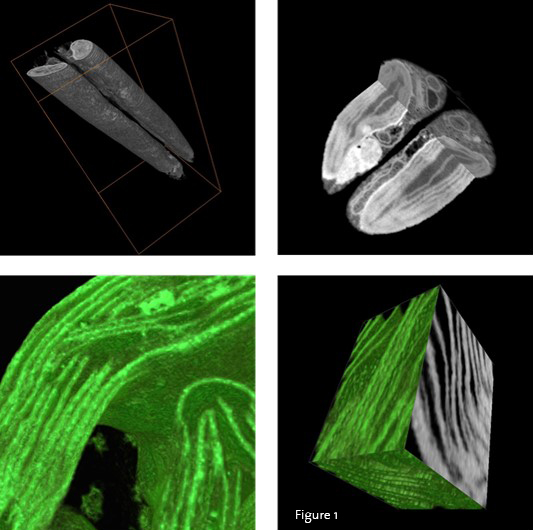How phytoplankton rule the oceans
Photosynthesis is a unique biological process that has permitted the colonization of land and sea by plants and phytoplankton respectively.
Flori S., Jouneau P.-H., Bailleul B., Gallet B., Estrozi L., Moriscot C., Bastien O., Eicke S., Schober A., Bártulos C.R., Maréchal E., Kroth P.,
Petroutsos D., Zeeman S.C., Breyton C., Schoehn G., Falconet D., Finazzi G. (2017) Nature Communications
CEA Grenoble, France
ETH Zürich, Switzerland
DOI: http://dx.doi.org/10.1038/ncomms15885
Press release from Grenoble external pagehttp://www2.cnrs.fr/en/2939.htm
Photosynthesis is a unique biological process that has permitted the colonization of land and sea by plants and phytoplankton respectively. While the mechanisms of photosynthesis in plants are well understood, we are only now beginning to elucidate how the process developed in phytoplankton. A collaborative project lead by Giovanno Finazzi and colleagues at CEA in Grenoble and involving the Zeeman group at IMPB has resulted in a newly structural model of the photosynthetic process in phytoplankton. The model is based on studies of the diatom Phaeodactylum tricornutum and was published in Nature Communications on June 20, 2017. The work was funded by the Marie-Curie Initial Training Network ‘AccliPhot’.
Photosynthesis is a remarkable mechanism for the transformation of light energy into chemical energy. Two miniature photochemical power plants make it possible: photosystem I (PSI) and photosystem II (PSII). But ideal conditions demand that PSI and PSII be kept apart, to avoid any “short circuits” that would make photosynthesis less effective. In plants, the two photosystems are separated by structures (see image A) that do not seem to exist in diatoms – which make up a major fraction of oceanic phytoplankton (see image B).
By adapting different high-resolution cellular imaging methods to Phaeodactylum tricornutum, the team was able to create a 3D model of the photosynthetic system in diatoms (see image C). They detected microscopic subdomains, permitting separation—as in plants—of the two photosystems for greater efficiency. These findings explain how diatoms may account for approximately 20% of all oxygen production on Earth, and why they have thrived in the oceans for about 100 million years.
The researchers are continuing to develop their 3D model of diatom photosynthesis, which should enable them to understand how these unicellular organisms may adapt to the effects of climate change.

Figure 1: Reconstruction of P. tricornutum cells with ultrastructural resolution showing the 3-D architecture of the thylakoid membranes.
